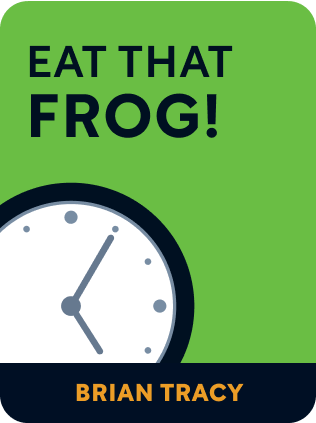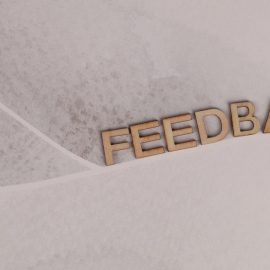

This article is an excerpt from the Shortform book guide to "Eat That Frog!" by Brian Tracy. Shortform has the world's best summaries and analyses of books you should be reading.
Like this article? Sign up for a free trial here .
Do you want to be more productive and successful? How can Brian Tracy’s 7 steps for success help you achieve your goals?
There are 7 steps for success and achieving goals: determine your goals, write them down, list the steps, turn the list into a plan, set a deadline, act on the plan, do something every day to further your goal. If you follow the 7 steps for success then you will see extraordinary results.
Keep reading for the 7 steps for success from Eat That Frog,
First, Determine Your Goals
Brian Tracy’s Eat That Frog method says that in order to be more productive, you must tackle the hardest and most important task first. However, before you can identify your most important task and jump into it, you need to set specific goals and what actions will contribute the most to reaching them.
Understanding your goals and action steps makes it easier to beat procrastination and complete your top task. In contrast, people who don’t set specific goals lack motivation because they aren’t sure what they’re trying to achieve.
Furthermore, people with specific, written goals achieve far more than those who haven’t articulated their goals, yet only a handful of people have set specific goals.
There are 7 steps for success and achieving goals. While doing just one of them could jump-start your productivity, implementing all of the 7 steps for success could generate extraordinary results.
7 Steps for Success
1) Determine your goals: Determine your goals in conjunction with your boss, so you’re clear about what you’re aiming for/what’s expected and in what order.
Many people spend their days doing trivial tasks because they haven’t clarified their goals with their boss. If you’re in this situation, you could be wasting your time trying to do a good job on something unnecessary. To paraphrase author Stephen Covey, your efficiency could be moving you in the wrong direction faster.
2) Write it down: When you set specific goals on paper, you make it real and concrete. A goal or objective that isn’t put into writing is short-lived.
3) List the steps for reaching your goal: It’s easier to achieve your goal when it’s broken into individual tasks. A list gives you a visual representation of the process for achieving your goal—it maps a path to follow, increasing the chances you’ll achieve it on schedule.
4) Turn the list into a plan: Prioritize your tasks, and list things in the order they need to be done. You may want to depict your plan with boxes, circles, and arrows to help show the relationships between tasks. With a written goal and a plan, you’ll be far more productive than if you had only a mental list.
5) Set a deadline for reaching your goal: Set an overall deadline plus sub-deadlines for the steps toward your goal. A goal needs definite deadlines with specific responsibilities to be completed—otherwise, you’ll procrastinate and get little done.
6) Act on your plan: Just do something. Your plan may not be perfect, but it’s better to act on an average plan than to do nothing with a great plan.
7) Do something every day to advance your goal: Put it on your schedule. For example, make a certain number of cold calls or exercise for 45 minutes. Don’t miss a day. Keep pressing forward.
Review Your Goals Daily
Specific, written goals change your thinking. They motivate and energize you, and help you avoid procrastination. The more ambitious they are, the more they inspire you; the more you dwell on them, the more driven you are to achieve them.
Set specific goals and review them every day. Start your day by completing the most important task that will move you toward your goal, then follow the 7 steps for success.

———End of Preview———
Like what you just read? Read the rest of the world's best book summary and analysis of Brian Tracy's "Eat That Frog!" at Shortform .
Here's what you'll find in our full Eat That Frog! summary :
- What it means to eat a frog
- How your daily distractions get in the way of doing important work first
- How to make a habit of doing the most important thing first, every day






